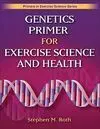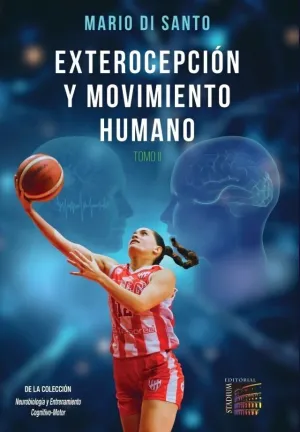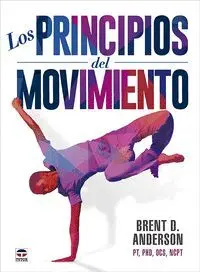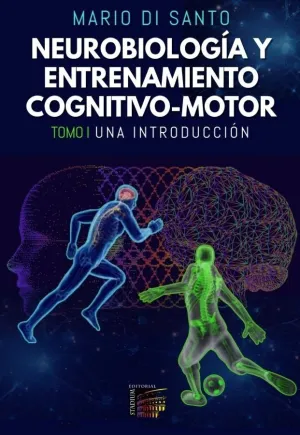
- Editorial:
- HUMAN KINETICS
- Materia:
- CIENCIAS APLICADAS AL DEPORTE
- ISBN:
- 978-0-7360-6343-2
- Páginas:
- 177
GENETIC PRIMER FOR EXERCISE SCIENCE AND HEALTH
STEPHEN M. ROTH
Genetics Primer for Exercise Science and Health is the first text dedicated to the basic concepts of genetics in relation to the broad range of topics in exercise science and health. Author Stephen M. Roth, PhD, makes the content comprehensible for readers who are unfamiliar with genetics without sacrificing the foundational and critical understanding necessary for interpreting research findings and incorporating genetics into research programs.
Genetics Primer for Exercise Science and Health maintains a practical focus and addresses common concerns when preparing to study genetics, such as how to use online search tools to identify existing research literature and how to identify and select candidate genes using genome databases. Through this text, readers will discover these concepts:
* The basics of DNA and genetics as they relate to health, physical activity, and sport
* Specific skills and strategies for interpreting and applying genetics findings in research
* How genetics research may affect sport performance training and clinical practice
* The ethical issues raised by genetics in society and sport
Special focus sections are incorporated throughout the text, providing expanded discussions of interesting topics in each chapter. Students see examples of how the principles described in the book have played out in real-life research, and they receive explicit instructions on planning and interpreting genetics research. Pedagogical aids such as summaries, key terms, and review questions also make this text ideal for efficient learning.
Part I presents readers with the basic biology and genetics information they need in order to understand and apply the information to exercise science. Part II explores the research and design methods that will help readers interpret and apply their findings. Part III addresses some of the current research findings in the area of genetics in exercise and health and discusses current issues in the field, including the potential for misuse of new genetic technologies and the ethics involved in gene doping.
Genetics Primer for Exercise Science and Health is the second volume in Human Kinetics’ Primers in Exercise Science Series, which provides students and professionals with a nonintimidating basic understanding of the science behind its topic and, where appropriate, how that science is applied. These books are written by leading researchers and teachers in their respective areas of expertise. The authors present in an easy-to-understand manner the essential concepts in dynamic, complex areas of scientific knowledge. The books in the series are ideal for researchers and professionals who need some background in an unfamiliar scientific area. The books also function as accessible basic references for those who will be returning to the material often. This particular book adds a health dimension to the exercise science focus of the series, with discussions on disease- and health-related information.
Genetic research will play an important role in the future practice of exercise science and health, requiring students and professionals to have this basic knowledge for success in their careers. Through its practical presentation of current and basic topics, Genetics Primer for Exercise Science and Health makes the case for more universities to introduce genetics courses to their curricula. Having the essential topics of genetics in a single, practical introductory text will facilitate the work of instructors, students, and professionals.
About the Author
Stephen M. Roth, PhD, is an assistant professor in the department of kinesiology at the University of Maryland, where he teaches courses in genetics and exercise science and health. He has extensive training in both exercise science and human genetics, and he directs the Functional Genomics Laboratory, where he maintains a research program dedicated to understanding the role of genetics in the contexts of aging, health, and exercise.
Dr. Roth has more than 45 peer-reviewed publications in scholarly journals, many of which are in the areas of genetics, health, and exercise. In 2005, the American College of Sports Medicine presented him with a New Investigator Award recognizing his work in genetics and exercise physiology. He also has an award from the National Institutes of Health to further his training in genetic epidemiology, extending his existing training in exercise physiology and human genetics.
Dr. Roth is a member of the American College of Sports Medicine, the American Physiological Society, and the American Society of Human Genetics. He is an assistant editor for Exercise and Sport Sciences Reviews.
Table of Contents
Preface
Acknowledgments
Part I. Basics of Genetics
Chapter 1. Individual Differences: The Role of Genetics in Exercise Science and Health
* Hidden Aspect of Average Values
* Why Do We See Variation in a Physical Trait?
* Summary
* Learning Aids
Chapter 2. DNA, RNA, and Protein
* Basic Cell Biology
* DNA
* Our Genetic Material as Chromosomes
* Special Focus: The Human Genome Project
* RNA
* Amino Acids and Proteins
* Structure of Genes
* Summary
* Learning Aids
Chapter 3. Transcription, Translation, and the Genetic Code
* Moving From DNA to RNA: Transcription
* Posttranscriptional Modifications of RNA
* Moving From RNA to Protein: Translation
* Posttranslational Modifications of Proteins
* Genetic Code
* Summary
* Learning Aids
Chapter 4. Moving Genetic Material to the Next Generation
* Basic Reproduction
* Sex Cell Production and Meiosis
* Special Focus: Mitosis Versus Meiosis
* Chromosomal Recombination
* Mendelian Inheritance Patterns
* Summary
* Learning Aids
Chapter 5. Heritability and the Basics of Genetic Variation
* Familial Resemblance: Genes and Environment
* Heritability as a Measure of Genetic Contribution
* Special Focus: Twin and Family Studies
* Genetic Variation
* Types of Genetic Variation
* Special Focus: Labeling Polymorphisms
* How Genetic Variation Can Influence Physical Traits
* How Do Polymorphisms Arise? Genetic Variation and Evolution
* Summary
* Learning Aids
Chapter 6. Genetic Variation and Disease
* Mendelian Disease Genetics
* Special Focus: Muscular Dystrophy
* Complex Disease
* Special Focus: Obesity as a Complex Trait
* Gene x Environment Interactions
* Gene x Gene Interactions
* Summary
* Learning Aids
Chapter 7. Linkage Disequilibrium, Haplotype, and Environmental Interaction
* Recombination Revisited
* Linkage Disequilibrium
* Linkage Analysis in Families
* Haplotype: Combinations of Neighboring Alleles
* Special Focus: The International HapMap Project
* Diplotype: Combinations of Haplotypes
* Gene x Environment Interaction Revisited
* An Introduction to Epigenetics
* Summary
* Learning Aids
Part II. Research Design and Methods
Chapter 8. Getting Started: Basic Skills for Genetics Research
* Is Genetic Variation Important for My Trait of Interest?
* Using PubMed
* Interpreting Existing Literature
* Identifying and Selecting Candidate Genes and Polymorphisms
* Using Genome Databases
* Summary
* Learning Aids
Chapter 9. Issues in Study Design and Analysis
* How Genetics Necessarily Alters Study Design
* Typical Study Designs
* Subject Recruitment
* Geographical Ancestry
* Special Focus: Race in Genetics
* Prospective Versus Retrospective
* Statistical Approaches
* Interpretation of Results: Association versus Cause and Effect
* Summary
* Learning Aids
Chapter 10. Basic Laboratory Methods in Genetics
* DNA from Blood or Cheek Cells
* Polymerase Chain Reaction (PCR)
* Genotyping with Restriction Enzymes
* Genotyping with Fluorescent Tags
* Special Focus: DNA Microarrays
* DNA Sequencing
* Summary
* Learning Aids
Part III. Current Findings and Extensions of Genetics Research
Chapter 11. Current Research Findings in the Genetics of Exercise Science and Health
* Overview of Current Findings
* Special Focus: The Human Gene Map for Performance and Health-Related Fitness Phenotypes
* ACTN3 and Muscular Performance
* ApoE and Cognitive Impairment
* ACE and Sport Performance
* Myostatin and Muscle Mass
* Summary
* Learning Aids
Chapter 12. Personalized Medicine
* Genetics and Complex Disease Revisited
* Promise and Limitations of Personalized Medicine
* Special Focus: Pharmacogenomics
* Genetics in Nutrition and Exercise Prescription
* Genetics in Disease Prevention
* Summary
* Learning Aids
Chapter 13. Ethical Challenges in Genetics and Society
* Ethical, Legal, and Social Implications of Genomics Gene Therapy for Disease Treatment
* Special Focus: Stem Cells
* Genetics in Sport: Genetic Testing and Gene Doping for Performance
* Summary
* Learning Aids
Appendix A: Answers to Review Questions
Appendix B: Evolution and Hardy-Weinberg Equilibrium
Glossary
Bibliography
Index
About the Author






